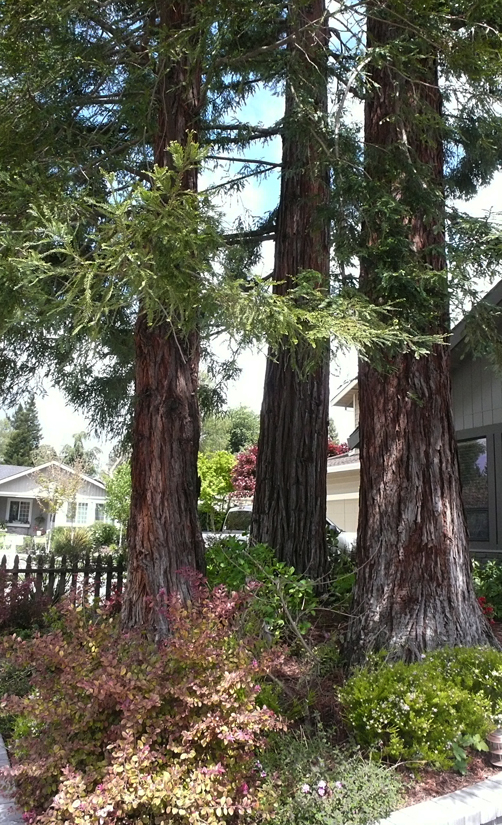In Northern California, there are still plenty of typical suburban front yards with thirsty lawns and foundation plantings of shrubs trimmed into gumdrop shapes. Biking around Sonoma recently I saw a number of white-picket-fenced cottage gardens filled with rose bushes and other heavy drinkers. But those paradigms are definitely on the way out. In the most interesting yards—like those I photographed for this post—the lawns were ripped out, replaced by visually exciting compositions of desert plants, rocks and mulch. This is Xeriscaping. It conserves precious water and complements the local surroundings.
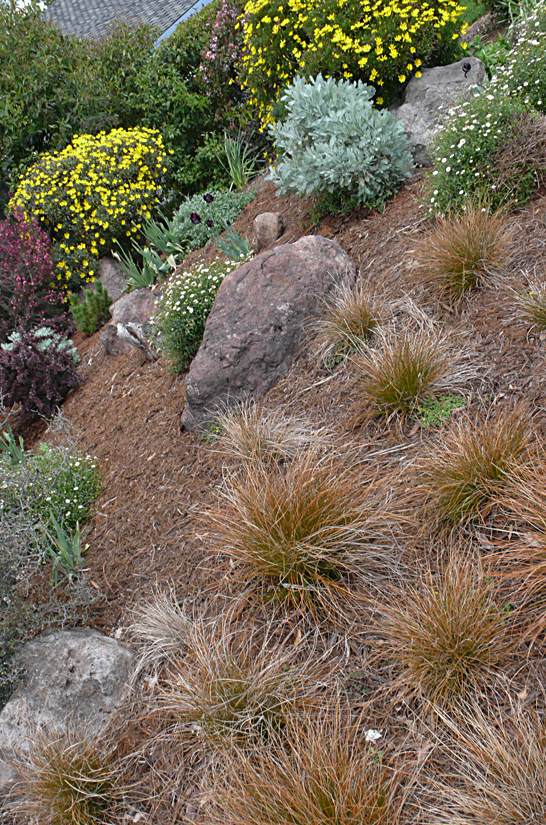 The term Xeriscaping, which combines xeros (Greek for “dry”) with “landscape,” was coined in 1978 by a Denver task force to define drought-tolerant landscaping, which is sometimes also referred to as zeroscaping or smartscaping. Whatever you call it, it is a philosophy of garden design that replaces lawns with plants whose natural requirements are appropriate to the local climate. Typical Xeriscaping choices in California include grasses, agave, cactus and other succulents, sedum, and herbs such as lavender and thyme—plants, that when water restrictions are in force, tend to survive. Omit the cacti, add evergreens for structure in the winter, and this is a successful style of planting in areas with cold winters.
The term Xeriscaping, which combines xeros (Greek for “dry”) with “landscape,” was coined in 1978 by a Denver task force to define drought-tolerant landscaping, which is sometimes also referred to as zeroscaping or smartscaping. Whatever you call it, it is a philosophy of garden design that replaces lawns with plants whose natural requirements are appropriate to the local climate. Typical Xeriscaping choices in California include grasses, agave, cactus and other succulents, sedum, and herbs such as lavender and thyme—plants, that when water restrictions are in force, tend to survive. Omit the cacti, add evergreens for structure in the winter, and this is a successful style of planting in areas with cold winters.
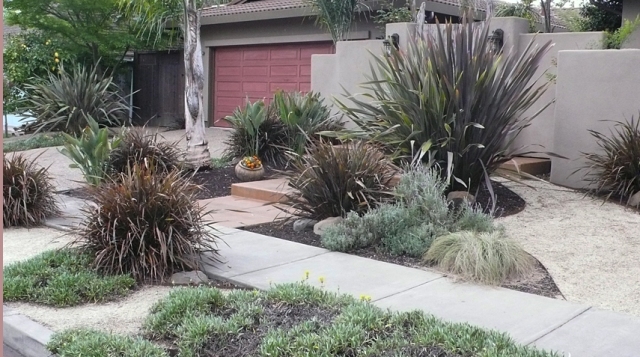
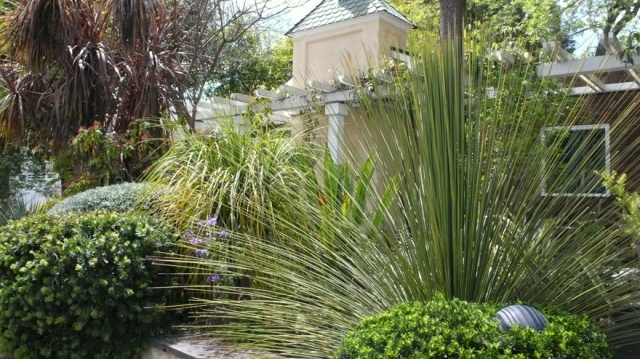
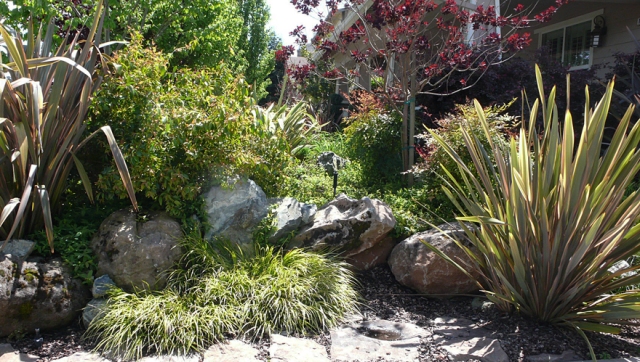 No landscape can be designed to never need watering, claim California landscapers, who group plants with similar watering requirements together. This is called Hydrozoning; less water-efficient plants are planted in the shade, under trees, or beside the house to shelter them from the sun and wind and decrease the amount of water needed to keep them healthy. Timed drip irrigation is utilized to give plants the minimum amount of water needed, and only to the plants that need it. Care is taken to avoid losing water to evaporation and runoff, and water is not allowed to splash onto driveways and walkways.
No landscape can be designed to never need watering, claim California landscapers, who group plants with similar watering requirements together. This is called Hydrozoning; less water-efficient plants are planted in the shade, under trees, or beside the house to shelter them from the sun and wind and decrease the amount of water needed to keep them healthy. Timed drip irrigation is utilized to give plants the minimum amount of water needed, and only to the plants that need it. Care is taken to avoid losing water to evaporation and runoff, and water is not allowed to splash onto driveways and walkways.
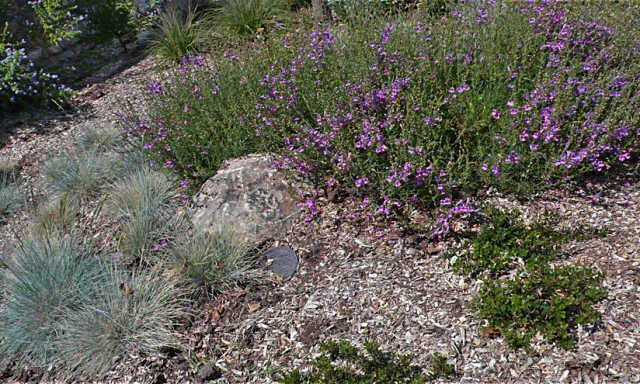
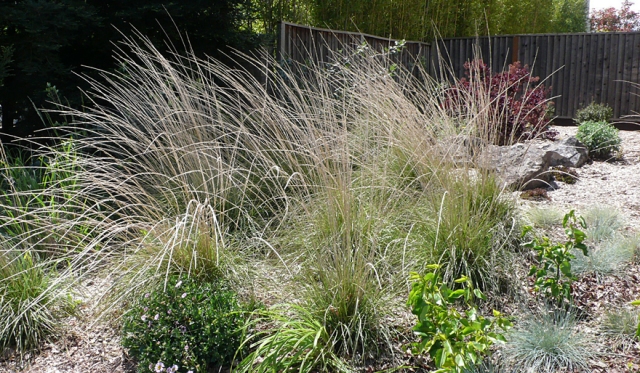 Xeriscaping requires planning—usually by experienced design professionals—especially if color is desired year-round. As these examples show, it also requires a keen eye for color and form. A few caveats: preparation of the soil require more start-up work than planting lawn grass or laying sod. Because the clean look of the composition must be maintained and weeds are more unsightly than in a traditional lawn, regular mulching is needed and upkeep is more involved than mowing and edging.
Xeriscaping requires planning—usually by experienced design professionals—especially if color is desired year-round. As these examples show, it also requires a keen eye for color and form. A few caveats: preparation of the soil require more start-up work than planting lawn grass or laying sod. Because the clean look of the composition must be maintained and weeds are more unsightly than in a traditional lawn, regular mulching is needed and upkeep is more involved than mowing and edging.
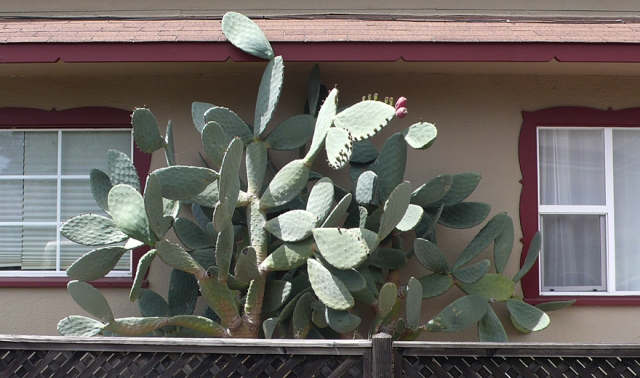
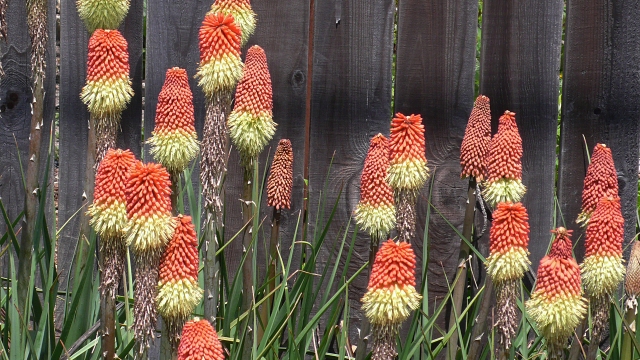 The advantages are many: lower water bills, more water available for other uses, little or no lawn mowing, attracting birds and butterflies—and a great, dramatic look based on contrasts of plant colors and shapes with clumps of native wildflowers or exotics, like red hot poker (Kinphofia), as accents.
The advantages are many: lower water bills, more water available for other uses, little or no lawn mowing, attracting birds and butterflies—and a great, dramatic look based on contrasts of plant colors and shapes with clumps of native wildflowers or exotics, like red hot poker (Kinphofia), as accents.
The owner of the house below used larger accents; he built his Xeriscape around three existing California redwoods.

